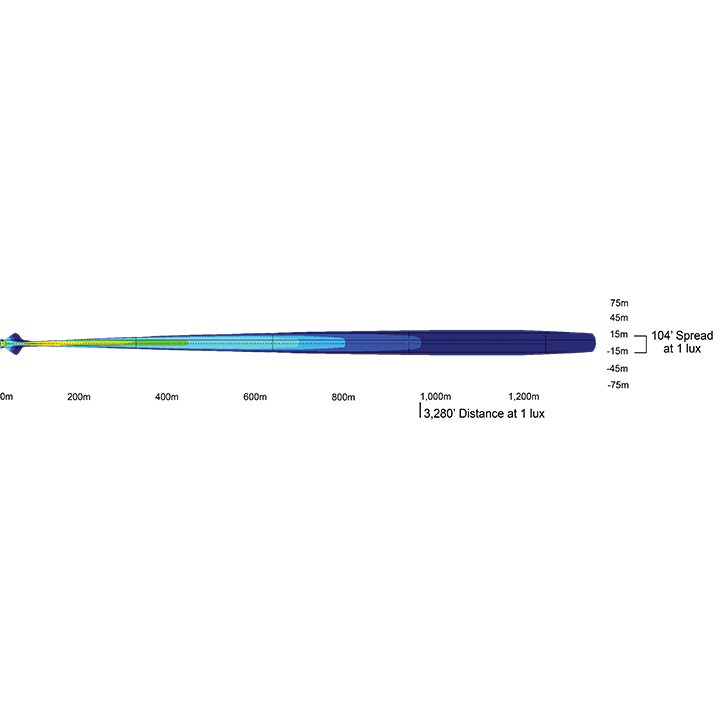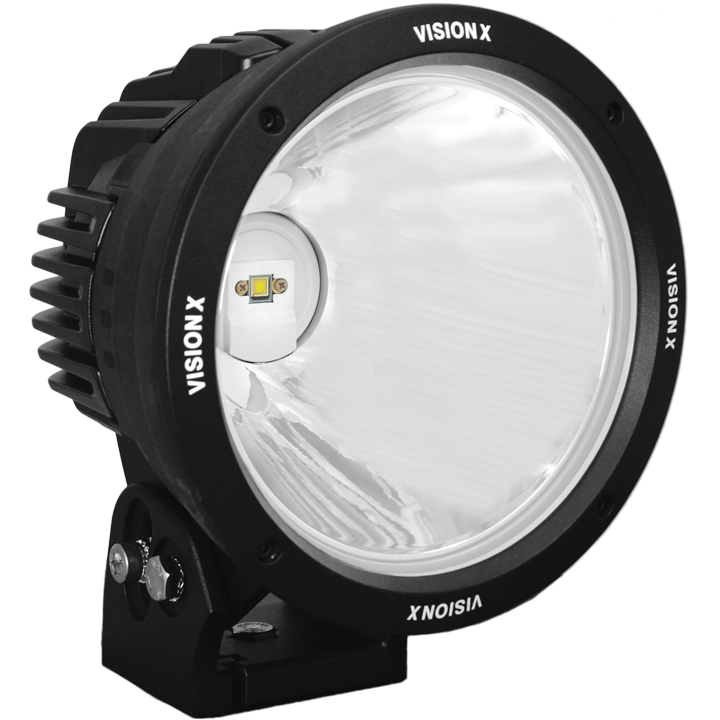There's no mention in that post anything whatsoever about an issue with (or preference of) color temperature (you are confusing what I said... What I said the issue was (putting it another way), the Spectral Power Distribution of very high color temperature LEDs is extremely poor).
And you eyed that? I think we're talking about different things when we talk about glare. I think you're confusing "really strong/harsh point light" with "glare".
No I am referring to strong light from reflections on nearby objects (or the road in front of you) and lack of contrast & intensity where the light beam falls in the distance.
You forget that when offroading, you don't only a use a single, very focused beam to navigate the dark at 80+ mph. As for colour rendering for a light that can light up a kilometer, or even "merely" 500 metres, you don't need perfect colour rendering at that distance.
The thought never entered my mind that anyone typically uses anything less than a pair of lights... (and when focused spot beams are utilized it's often together with the high beams).
I actually agree with the first part: That there isn't a problem with colour rendering. But the latter part is actually wrong. If it's darkish, your retina uses more of the B/W sensors, which means shades, not colours. That is why a red tent in the dark could just as well be black. The colour you see first at any given lumen is green (i.e. the colour stalks in your retina can sense green before, say, red or yellow). So, during the night, without anything but moonlight, you mostly use the B/W stalks. You "navigate" by way of different shades and contrast.
Not sure how a question can be wrong... But typically one likes to have much more light than moonlight when they are traveling 80+ MPH, simply because the "B/W sensors" in your eye (they're called "Rods") don't provide good (or fast) enough visual feedback when driving that fast. So that is why we put big bright lights on our vehicles.
And thus it is argued that in theory, and if you give the numbers you give more credence than it warrants, then you'd be right. LEDs have come a long way from where the almost-police-blue is dominant.
The SPD chart I posted is of a fairly modern LED. Last I checked, technology has not advanced very much on single-phosphor LEDs of the type being discussed here (most advancements have been in lower-CCT LEDs of the type used for household lighting).
A blue LED display is using blue LEDs, so unless you try to make the strawman that I'm arguing that we should use headlights with BLUE LEDs, talk about a blue LED display is really not pertaining to this discussion. Headlights (offroad or legal) are not made with blue LEDs.
Yes they are. "White" LEDs are infact blue LEDs. The phosphor coating is what produces their white color (and is why they have the intense spike of blue they have, that is blue light not converted by the phosphor).
https://en.wikipedia.org/wiki/Light-emitting_diode#Phosphor-based_LEDs
CRI, Color Rendering Index ---- LED is about a 74 and Halogen a 99 or better. Also less perceived glare with halogen, SPD (spectral power distribution) is better.
I think you're giving them too much credit. Most 5000°K+ LEDs are 70 or less CRI according to documents such as the one I pulled that SPD chart from.
And LED is perceived as 30% brighter than it actually is due to the poor SPD.
Which I suspect also triggers your pupils to constrict more, further reducing the light's effectiveness.
Don't buy amber anything for driving. Amber is a signal color period. If you like yellow, and I do too, get selective yellow. The yellow bulbs all suck so you'll have to look for a tinted lens or tint it yourself with Duplicolor Metalcast Yellow spray paint. (it works great)
I forgot about selective yellow... Yes, that would be what to get. Unfortunately not available in LED though (and using the paint you mention on a 5000K+ LED lamp I suspect would cut it's brightness by 60% or more since about all they are is blue light).
Moving goal posts once again. Now it's because they're pricey.
No goalpost was moved. I think Hilldweller was simply adding another point to the argument is all (which I cannot disagree, they are very overpriced given their poor SPD performance).
Why you seem to have something against being able to see what is in front of you more naturally (in color) while driving I'm not quite sure I understand, but I think it's safe to say that I'm not the only one who would prefer to see things that way.






